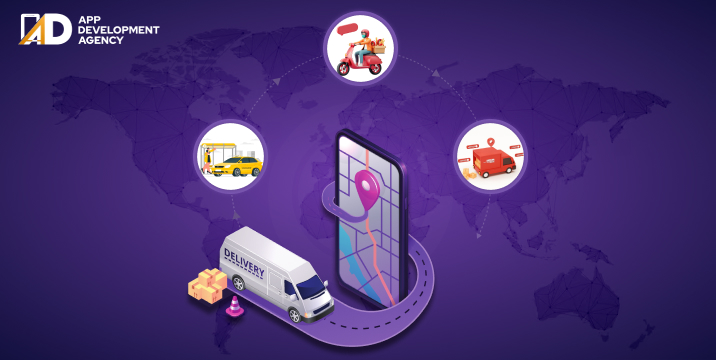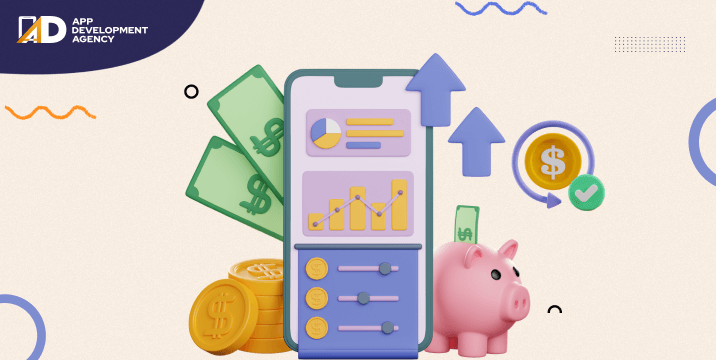Who won’t like their efforts to pay off in multiple ways? The case with the cross-platform app development is identical. Developers write their code once which can be re-used to generate similar results/a website or an app to run across different operating systems like Android/iPhone/Blackberry/HTML5/Microsoft (with of course some tweaks and minor permission converts)
Developing mobile apps that work across platforms includes making codebase for modules that will be used on multiple operating systems. The technologies that have been using cross-platform app development extensively include Beacon, Internet of Things (IoT), Wearables, Augmented Reality and Virtual Reality, Cognitive and Artificial Intelligence, 5G Technology, APM and EMM, Chatbots, Mobile E-commerce, AMP (Accelerated Mobile Page), Cross-Platform Development, Cloud Storage Development, Single Page Applications, Blockchain As A Service (BaaS).
The ionic framework was launched in 2012, pretty close to the origin of web-based technologies like JavaScript started building extensively to deploy native apps for iOS, Android and other popular mobile operating systems. It is an open-source SDK, specially formulated for developing hybrid applications/cross-platform app development and progressive web app development based on modern web development technologies such as HTML, CSS, other tools and services provided by SaaS Ionic. As an exemplification to its popularity, statistics showcase that developers from across 200 countries have developed > 5 million Ionic Apps by 2020.
Sworkit, JustWatch, McDonald’s Türkiye, McLaren Automotive, Honeyfi, MarketWatch, ChefSteps, Diesel, Pacifica, StockPlan Connect
For More Information
The Ionic Framework helps to build mobile apps with just one single codebase for all the mobile operating systems. Hybrid App Developers may also consider using Ionic Templates that may be useful to create a cross-platform app faster. Ionic’s official marketplace can be looked out to find more designs, scripts and plugins.
On its way up, ionic still has a long way to go; but we still have Flutter which is relatively new, much more efficient; so let’s find out the major features that fare well for cross-platform app development.
Flutter was developed by Google in response to the performance issues faced during cross-platform app development.
(1) It consists of a portable UI toolkit that can be deployed for creating high performance, structured natively compiled applications for mobile, web and desktop from a single codebase.
(2) Similar to its counterpart Ionic, it is as well free and open-source. It further speeds up the development of apps and reduces the cost and complexity of the app across platforms.
(3) Many hybrid app developers perceive Flutter as a productive prototyping tool that helps deliver the original design vision.
(4) It is to be used by businesses who simply wish to invest one-time.
(5) It also fares well for the businesses who want to go with single time investment and reap the rewards later.
(It’s like the major features integrate with the upcoming advantages of the technology to provide a more palatable solution to the problem in hand)
(6) Flutter can be optimized to create amazing 2D mobile apps that apply to both Android and iOS devices.
(7) Flutter as well as renders building fully-featured apps including camera, geolocation, network, storage, 3rd-party SDK and more.
(8) The presence and use of Webview distinguish Flutter from other techniques used for hybrid app development. This particularly averts the need to have OEM widgets as the supporting rendering engine can draw widgets on its own, pretty much precise and right on point.
(9) The layered structure of the C/C++ code can implement most of its system – composting, gestures, animation, framework and widgets – make users gear the system and be in control.
(10) Flutter does come with inbuilt support for Android Studio, IntelliJ IDEA, and VS Code.
(11) Developers can make use of command in a terminal and one of the many editors that support editing DART.
(12) The widgets are of high-quality material design and Cupertino (iOS-style widgets)
(13) DART scores high on developer productivity, object orientation, predictable-high-performance and fast allocation
We prefer working with Flutter due to high performance; hot reload developer cycle and stateful culture. Although it is still in its beta version, the desktop support is in alpha with macOS being the furthest along. We can access platform services and API like sensors and local storage. The ready-made packages for several platform services and API’s are available on pub.dev. We do encourage the developers to make use of Flutter’s asynchronous message passing system to create their integrations with the platform and third-party APIs. They may bundle up widgets and can expose as much or as little of the platform API’s as desired.
Points of Difference |
Ionic |
Flutter |
| Initial Release | 2013 | 2017 |
| Language | HTML, CSS, Angular,Javascript, & Typescript | DART |
| Speed | It is relatively slower than Ionic | It makes use of web technologies; faster than Ionic |
| Performance | Moderate | Better than Ionic |
| GUI | HTML, CSS | Use Proprietary widgets |
| Pricing | Open source and Paid versions | Open-source version only |
| UI elements | Standards-based Web Components | Proprietary Widgets |
| Offline access | Yes | Yes |
| Mobile performance | Very Good | Excellent |
| Web performance | Excellent | Not so good |
| Deployment options | Mobile, Desktop, Web, PWA | Mobile, Desktop, Web |
Both Ionic and Flutter share a common vision to develop apps across platforms. But, the USP of the Flutter Framework is allowing app development companies to create for the web, mobile and desktop platforms. While Ionic app development companies make use of HTML/CSS/JS to the standards-based UI components, Flutter makes use of DART programming language, thus enabling its standards that are very different from today’s browser capabilities, web languages and JavaScript libraries. Flutter supports Android Jelly Bean, v16, 4.1.x+ versions, and iOS 8+; while Ionic supports Android 4.4+ versions, iOS 8+, and Windows 10. Both Flutter and ionic are free and open source. However, Ionic does offer a pro version which is paid version and tends to improve the development process. For all these reasons, Ionic is suitable for developing enterprise applications while Flutter suits well for start-up app development.

For every average and middle-class individual, their owned cars are a major expense to them. The expense does not only mean purchasing an expensive vehicle, but it is also about the recurring expenses after making the car purchase; such as repair, maintenance, fuel cost, monthly car payment, car insurance, etc. What if we tell you …
Continue reading “Best Driving Apps to Make Money in 2024”
Read More
Story Time: It’s the last of the month… and you have a low balance in your bank account. You need money to pay off an EMI, but salary payday is still two days ahead. Sounds like skating on thin ice… Right? That’s where cash advance apps like Possible Finance come into the picture. ‘Cash Advance …
Continue reading “21 Top Apps like Possible Finance to Get Instant Money in 2024”
Read More
Is the ridesharing industry saturated now? No doubt there are already a lot of best ridesharing apps globally. However, as per Statista, the leading research site, the ridesharing market is expected to grow at 22.13% annually and reach $226 billion dollars by 2028. The numbers are crazy, and to further prove our point – Arro, …
Continue reading “14 Best RideShare Apps in 2024”
Read More